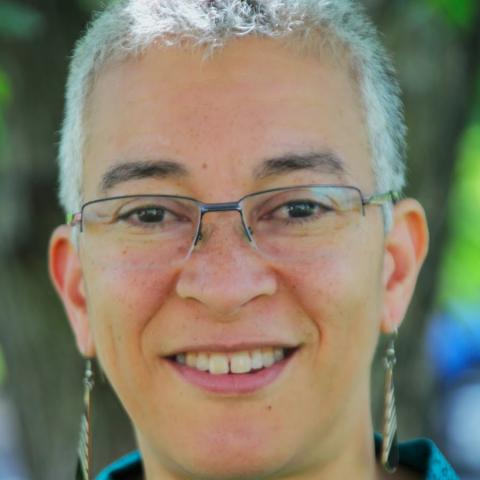
Liane Rozzel is a senior policy associate for juvenile justice at the Annie E. Casey Foundation, which develops solutions to build a brighter future for children, families, and communities.
Posts By This Author
From the Archives: November 1984

Natalia61 / Shutterstock
WOMEN IN almost every culture and segment of society experience violence ... that is directed specifically at them as women. In the United States, women of color—Latina, African American, Asian, and Native American—experience violence that is specifically focused against them because of both their race and their gender. When misogynist violence combines with racism, the result is a unique and deadly threat to women of oppressed races. ...
Women of different races and economic backgrounds have begun to join together in a movement to end the violence that endangers them all. The women of color who are involved in this movement, however, bear witness to the barriers that hinder such cooperation. Prominent among them is the misunderstanding or ignorance of the particular ways that both individuals and institutions perpetrate violence focused against women of color. It is clear from the historical and current experiences of women of color that racism is an inextricable factor in this violence. They reject, therefore, analyses that blame only sexism and patriarchal structures for violence against women. The problem of misogynist violence can only be fully addressed when the experiences of all women are incorporated into the perspective of the movement for change. Both racist and anti-women stereotypes and attitudes must be overcome before society can become a safe place for all women.
Making Sure Black Girls Matter
WE HAVE SEEN some of their stories on the news and social media: Black girls, some as young as 5 and 6 years old, criminalized and harshly punished in school settings.
For example, Desre’e Watson, a Florida child, and Salecia Johnson in Georgia, both 6-year-old kindergarten students, both handcuffed and arrested by police for having emotional meltdowns—temper tantrums—at school. Or last year, the South Carolina teen flipped over in her desk and thrown across the room by a sheriff’s deputy for refusing to put away her cell phone or leave her algebra class, and, incredibly, Niya Kenny, the distraught classmate who recorded the incident on her phone and was arrested as well (though charges were later dropped).
When these and other outrageous examples of harsh punishment of school children come to public attention, they are seen as part of the school-to-prison pipeline that disproportionately pushes youth of color—especially African-American youth—out of school and toward the justice system. These problems often are seen as primarily affecting males, and initiatives to address them focus on improving outcomes for black boys. In her book Pushout: The Criminalization of Black Girls in Schools, Monique Morris makes the case that the specific experiences and treatment of black girls in schools and society are different from those of black boys and merit systematic attention and remedies tailored to create opportunities for black girls to thrive.
Pushout examines the intersection of black girls’ experiences as both girls and black youth. The book spotlights the persistent “one-dimensional stereotypes, images, and debilitating narratives” that threaten black girls’ survival and lead them to what Morris terms “school-to-confinement pathways.” Morris, president and cofounder of the National Black Women’s Justice Institute, stresses that she is not attempting to pit oppressed identities—black males and black females—against each other. Instead, she systematically unpacks the particulars of black girls’ experiences to explain why “individuals, communities, and all sorts of institutions have an obligation to understand why the pushout of black girls ... goes unchallenged.”
From the Archives: August 1983
ON MARCH 1, 1954, at 6:45 a.m., the U.S. government detonated a 15-megaton hydrogen bomb in the Bikini Atoll. Within a few hours, the ash-like radioactive fallout from the “Bravo” test explosion began to descend on the nearby inhabited atolls of Rongelap and Rongerik. An Air Force witness said the fallout resembled “a snowstorm in the middle of the Pacific.”
A two-inch-deep layer of radioactive dust accumulated on Rongelap, contaminating its food supply and drinking water. Children playing in the powder experienced skin eruptions on their arms and faces. By the end of the day, the residents of Rongelap had begun to exhibit the symptoms of acute radiation exposure: burns, severe vomiting, diarrhea, and hair loss.
'Colorblind' Racism
A New Direction for Juvenile Justice
State of Emergency
On August 27, the day before he was scheduled to lead a march on Pollsmoor prison, where black political leader Nelson Mandela is serving a life sentence, Rev. Allan Boesak was arrested by South African police under a law that allows for indefinite imprisonment without charges or trial.
Double Jeopardy
Women in almost every culture and segment of society experience violence—from both individuals and institutions—that is directed specifically at them as women. In the United States, women of color—Hispanic, Afro-American, Asian, and Native American—experience violence that is specifically focused against them because of both their race and their gender. When misogynist violence combines with racism, the result is a unique and deadly threat to women of oppressed races.
Throughout the world, and especially in war, rape has been an instrument of racial conquest and oppression. Groups of men from one race have attacked women of races they deemed inferior. The toll has included Jewish women who were raped by German troops, Chinese women raped by Japanese soldiers, Bengali women raped by Pakistani soldiers, Native American women raped by white settlers, Afro-American women raped and terrorized by the Ku Klux Klan and other groups, and Vietnamese women raped by U.S. soldiers. These systematic attacks on women often included mutilation and murder, and they were part of a general pattern of terrorism against the population involved.
In these cases, the racist underpinnings of the assaults are beyond doubt. The attacks against women represented an extreme humiliation of the race to which they belonged. Women, in the minds of their attackers, were either property to be sabotaged or subhuman because they belonged to an enemy race.
Susan Brownmiller, in her book Against Our Will, quotes a Vietnam war veteran who in a panel discussion described the systematic rapes that were conducted by U.S. troops under the pretext of "searching" Vietnamese women. After the veteran described the mutilation and murder of one particular woman, the moderator asked him, "Did the men in your outfit, or when you witnessed these things, did they seem to think it was all right to do anything to the Vietnamese?" The veteran replied, "It wasn't like they were humans … They were a gook or a Commie and it was okay."
Strangers and Aliens in the Land
Immigration reform is an issue guaranteed to bring out some of the worst contradictions in U.S. society.
God Save Us All
The death penalty is increasingly being used in the United States.
People of Color, People of Peace
Black peacemaking is born in the struggle for justice.
A Deadly 'Snowstorm'
On March 1, 1954, at 6:45 a.m., the U.S. government detonated a 15-megaton hydrogen bomb in the Bikini Atoll.


